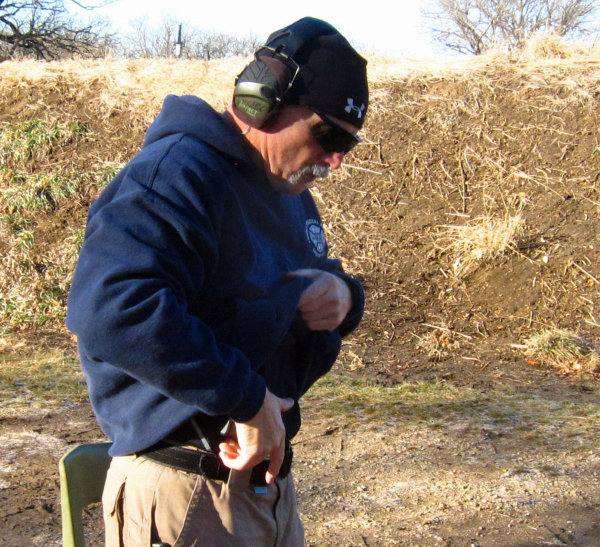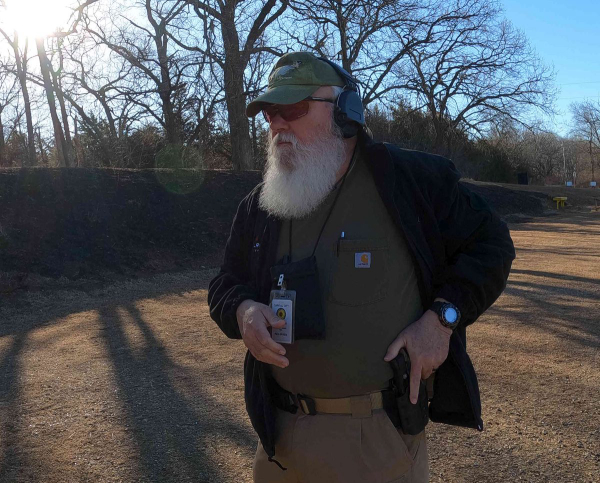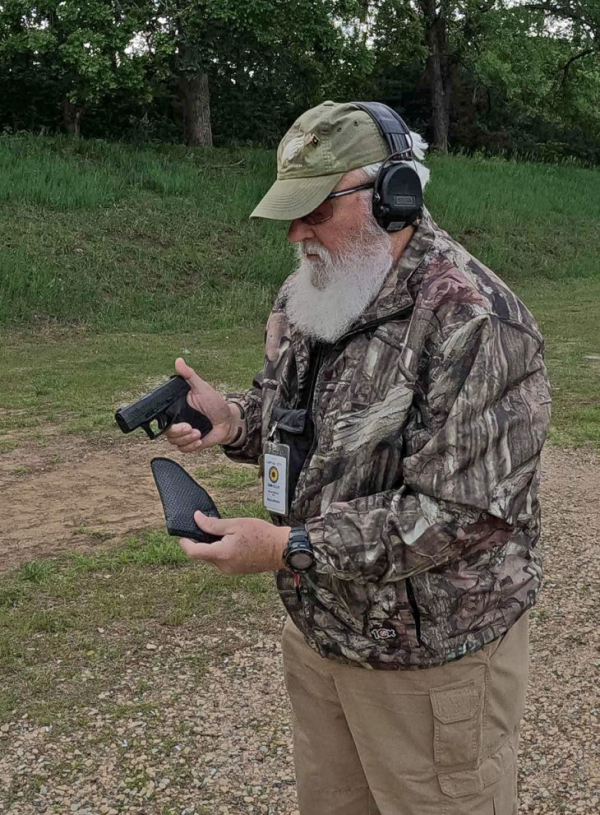I don’t just scour the internet for entertainment, I look for springboards – anything that generates some thought so I can make a case. In so doing, perhaps some discussion follows with general learning all around.
This time I got some good rant material. Let’s begin with this paraphrased statement:
“Don’t look at your holster when you’re putting the gun away. Look at the threat.” The writer goes on to create his strawman: “Look at the threat? If it’s still “a threat,” why are you reholstering?”
He then goes on to suggest that one “shouldn’t be in a hurry” to return the gun to the holster and admits “you may not be able to see the holster” in conditions of adverse light. In that case, “use the light mounted on the gun to see the holster.” He also advises a handheld light would work.
The writer refers to “one handed reholstering by feel” as “sloppy gunhandling,” finishing with the best thing he wrote about the topic – “Reluctantly and deliberately re-holster.”


The dividing line between “range world” and the street, while slim, contains a universe of multiple intervening variables. While saying “we should always do things one way – be consistent” (there’s truth in this), we also must be aware of those various operations that prevent absolute consistency in the situational environment.
Start from the beginning. Why did anyone counsel a trainee in law enforcement – or armed citizens who lawfully carry concealed – to put the gun away “without looking?”
The original issue – reanimation of shot people – is only one aspect. According to SWAT cop and trainer Bill Blowers, it was a very common situation for cops (on-duty and off, in uniform and in plainclothes) in his area. Small arms are seldom effective in completely shutting down combative suspects for long. They can be surprised by the initial rounds and go down, stumble, begin flight – any number of things, then realizing what happened, come back.
On very rare occasions, the offender has a friend or friends – “seeded backup” waiting to intervene if a nosey cop or an armed citizen takes a hand. It’s not impossible, just extremely rare.
So why the hurry to reholster?
This requires thought. Consider the environment. It’s not a range, it’s out in the world, in public, with others wandering through and around the scene. Everyone has a mobile phone; cameras are everywhere and some business establishments feature “silent alarms” switched by a cashier being robbed.

Who do you think is responding to that call for service, the Girl Scouts? It’s people with guns. They draw too – and shoot. How are they supposed to know who you are?
“Sorry, pal. Left that crystal ball in the other patrol car.”
You may feel that special sign, that halo, but they can’t see it. They see what Ayoob once described in another context as “a specimen with antlers” and they have a hunting license. Standing there with gun in hand – because you’re hard-wired not to look away from a deadly threat – is a good way to get that ticket punched.
So long.
I’m not looking “at the threat” or even for “other threats” as much as I’m looking for responding cops or armed citizens. Get it right.
Backing into a corner – someplace no one can effectively flank – reholstering and keeping a hand on that gun, gives you a quick way to return to the fight, if called for. It allows you to see responding officers before they see you. And slowly removing your hand from the gun and raising them both is better than letting the gun go, uncontrolled, to the ground. I know about the “drop safe” fantasy and all, but a live gun going up for grabs at a crime scene is bad business.
So why holster one-handed by feel? Because looking away is (1) unlikely, and (2) made less effective by intervening concealment garments or lighting conditions.
Is there a time to look at the holster to put the gun away? Absolutely.
If you’re new to all this, the first few thousand times you holster the handgun (or a nonfiring analog), looking the gun into the holster feeds information to the brain – “What I’m doing, you’re seeing, what you’re seeing, you’re feeling. This is right – anything else is wrong.”
In the dark – no soap. If you are an armed citizen – or anyone but a uniformed member of service – carrying a gun light is more cosplay than preparation. Using a handheld light means you have one hand on the gun, one on the light and you use a third hand to ensure garments are out of the way.
That works.
Another good time to “look the gun into the holster” is whenever you can; the range is good for that. Dry practice. That visual rep does nothing but reinforce the good habit.

If you have a new holster, especially one worn in an unfamiliar position – treat it as if you’re a brand-new shooter. Look the gun into the bucket. Likewise, it’s good to look when replacing the gun into a pocket holster. Remove the holster from the pocket, look as you replace the piece keeping the hand holding the holster clear of the muzzle.
Deliberately, reluctantly reholstering is smart money. Getting in a hurry to reholster is bad. If you’re shooting at the range and you fire repetitive strings from the draw, get into the habit of stopping while on target. Admire your work through the sights. Bring the gun back and breathe while you look around. Someone on the line may have dropped something and bent in front of the line to get it. You seeing that can allow you to avert the muzzle. Clear any garments from the holster.

I flag my shooting hand thumb and physically clear the holster mouth with it.
After clearing the holster physically, place the index finger at register, high on the pistol, and put your thumb on the back of the slide/hammer, then slowly place the gun into the holster.
If there’s any resistance, pause and reverse. Recheck, visually if you can and by feel in any event.
Be smart. Be safe. Be responsible.
— Rich Grassi